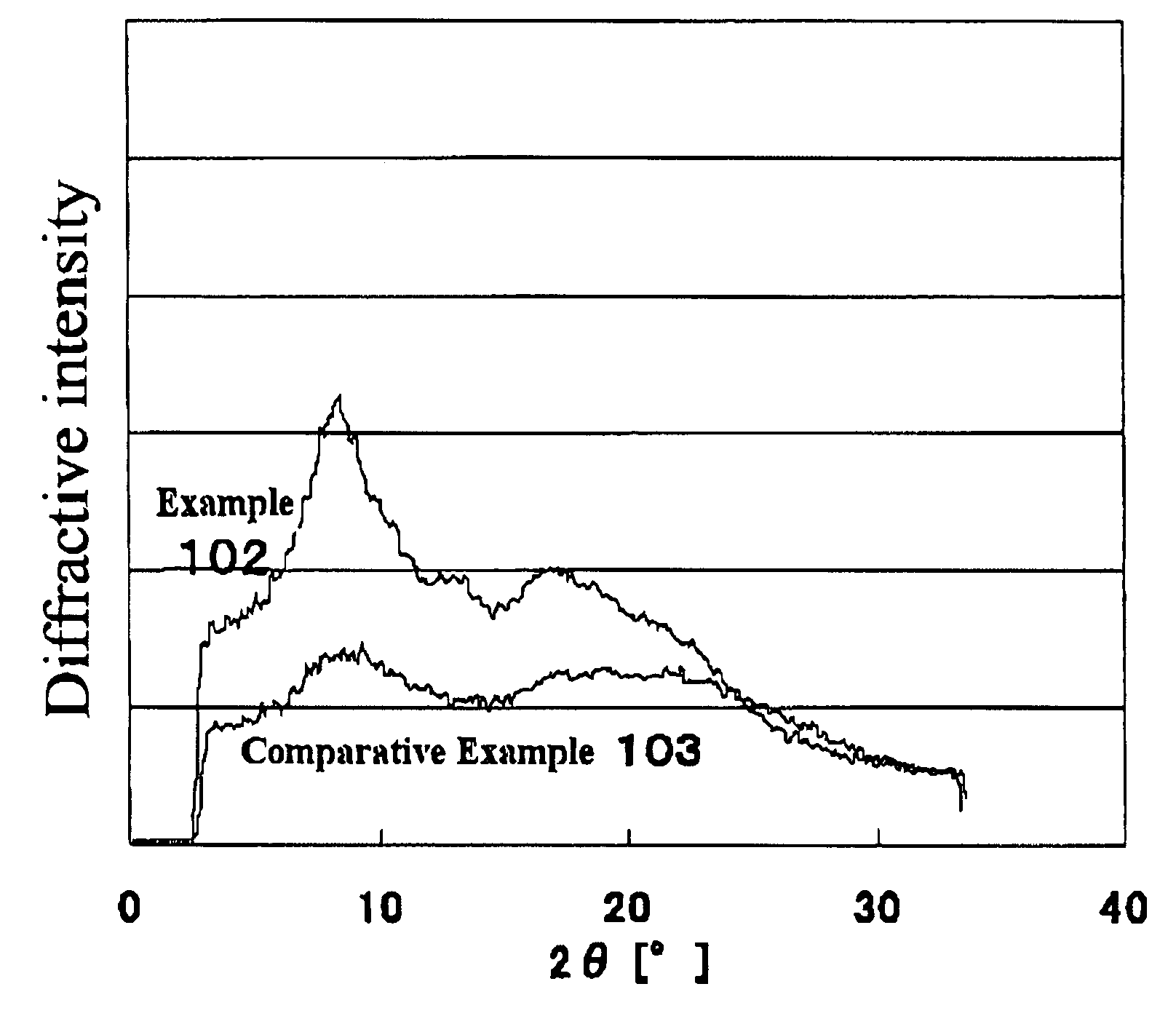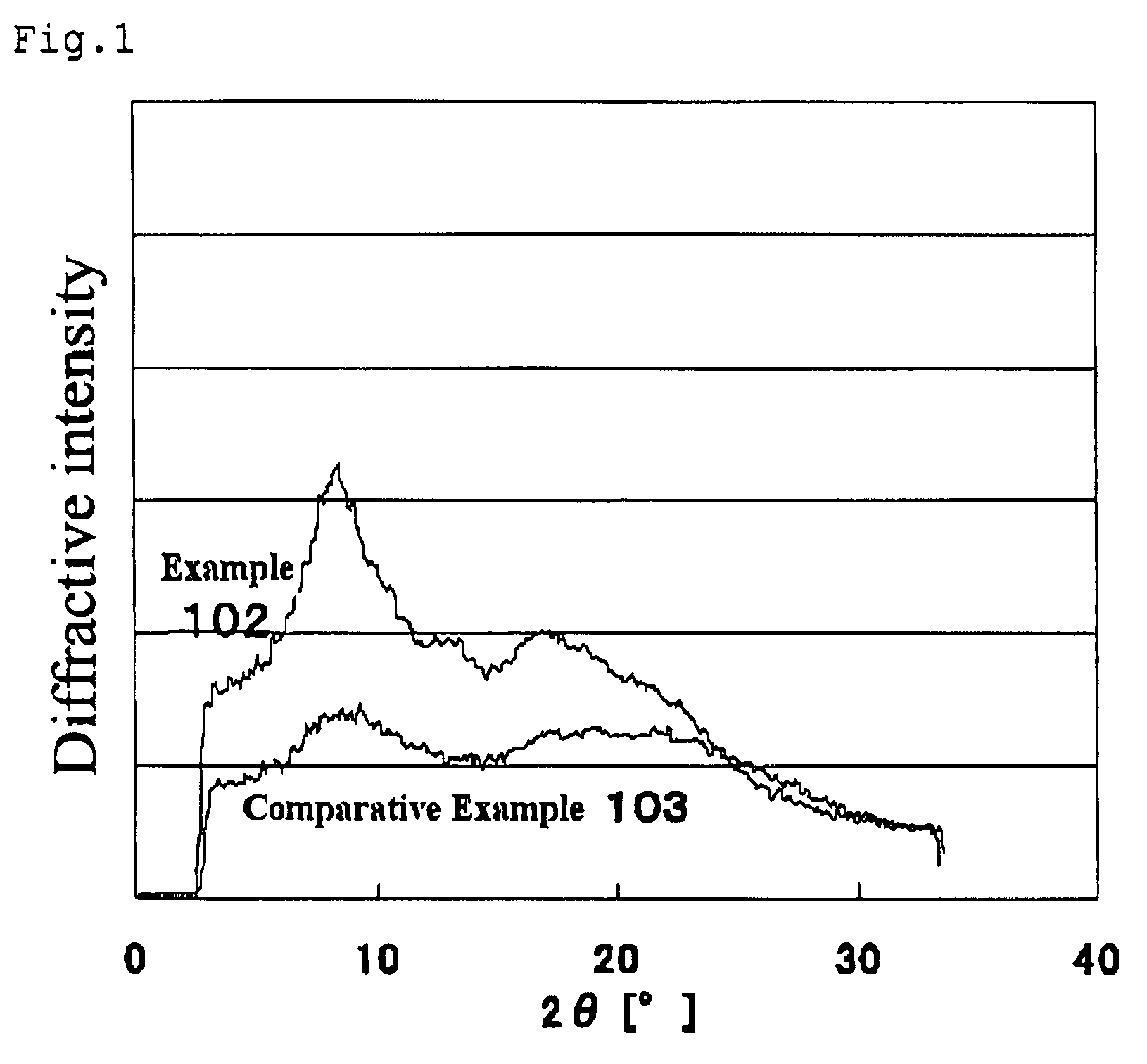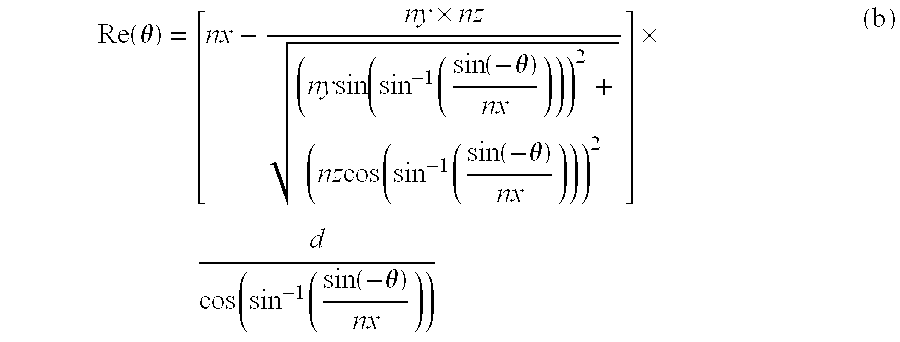Cellulose acylate film and method for producing same, and retardation film, polarizing plate and liquid crystal display device comprising the film
a technology of cellulose acylate and retardation film, which is applied in the direction of instruments, other domestic objects, transportation and packaging, etc., can solve the problems of inability to obtain retardation films, incompatibility of optical properties and moisture absorption, etc., and achieves excellent optical properties, improved optical properties, and reduced retardation.
- Summary
- Abstract
- Description
- Claims
- Application Information
AI Technical Summary
Benefits of technology
Problems solved by technology
Method used
Image
Examples
examples
>
[0193]Hereinafter, methods of measuring and evaluating the characteristics used in the following Examples and Comparative Examples will be described.
[X-ray Diffractive Intensity]
[0194]Three points (the center portion and end portions (positions away from both end portions by 5% of the whole width)) in the width direction of the film were sampled, the sample of 2 cm□ was taken, the average value of each point measured in accordance with the above-mentioned method was calculated, and Ic2 / (Iam2+Ic2), a half-value width of the peak, Ic4 / (Iam4+Ic4) and Ic21 / Ic22 were calculated.
[Moisture Absorptivity]
[0195]Three points (the center portion and end portions (positions away from both end portions by 5% of the whole width)) in the width direction of the film were sampled, and the average value of each point measured in accordance with the above-mentioned method to obtain a moisture absorptivity.
[Haze]
[0196]Five points (the center portion, end portions (positions away from both end portions ...
examples 101 to 114
, Comparative Examples 101 to 103
(Preparation of Polymer Solution)
1) Cellulose Acylate
[0201]In respective Examples 101 to 114 and Comparative Examples 101 to 103, the cellulose acylates A or B described later was used according to Table 1. Each cellulose acylate was heated and dried at 120° C. to have a moisture absorptivity of 0.5% by mass or less. After that, 15 parts by mass of cellulose acylate was used.
[0202]Cellulous Acylate A:
[0203]Powder of cellulous acetate having a substitution degree of 2.85 was used. In cellulous acylate A, a viscosity-average polymerization degree was 300, a substitution degree of 6-acetyl group was 0.89, a acetone extraction was 7 mass %, a ratio of mass average molecular weight / number average molecular weight was 2.3, a percentage of moisture absorptivity was 0.2 mass %, a viscosity of 6 mass %-dichloromethane solvent was 305 mPa·s, residual acetic acid amount was 0.1 mass % or less, Ca-containing amount was 65 ppm, Mg-containing amount was 26 ppm, Fe...
example 151 to 154
(Re-extension of Film)
[0254]Both ends of the cellulous acylate film completing the heat treatment were gripped tenter clips and then the film was extended in the heating zone. The temperature of the heating zone, the extension ratio and evaluation of the obtained cellulous acylate film was shown in Table 2. The extension ratio was obtained by drawing gauge lines at regular intervals in a direction parallel to the transport direction of the film and then measuring the gauge lines before and after the extension.
[0255]Extension Ratio(%)=100× (interval of gauge line after extension-interval of gauge line before extension) / (interval of gauge line before extension)
[0256]
TABLE 2X-ray Diffractive Intensity2 θ22 θ4Slow-PhaseExtensionHalfHalfAxis AngleHeatTemper-ValuePosi-ValueReRthSoundTransportTreatedatureRatioWidthtionWidthHazeAverageAverageVelocityDirectionFilm[° C.][%}Ic / (Iam + Ic)[°]Ic2 / IC2[°][°][%][nm][nm][°][°]Example 151Example 108160300.660.622310.30.80.2210−189090Example 152Example...
PUM
| Property | Measurement | Unit |
|---|---|---|
| 2θ | aaaaa | aaaaa |
| 2θ | aaaaa | aaaaa |
| 2θ | aaaaa | aaaaa |
Abstract
Description
Claims
Application Information
 Login to View More
Login to View More - R&D
- Intellectual Property
- Life Sciences
- Materials
- Tech Scout
- Unparalleled Data Quality
- Higher Quality Content
- 60% Fewer Hallucinations
Browse by: Latest US Patents, China's latest patents, Technical Efficacy Thesaurus, Application Domain, Technology Topic, Popular Technical Reports.
© 2025 PatSnap. All rights reserved.Legal|Privacy policy|Modern Slavery Act Transparency Statement|Sitemap|About US| Contact US: help@patsnap.com



